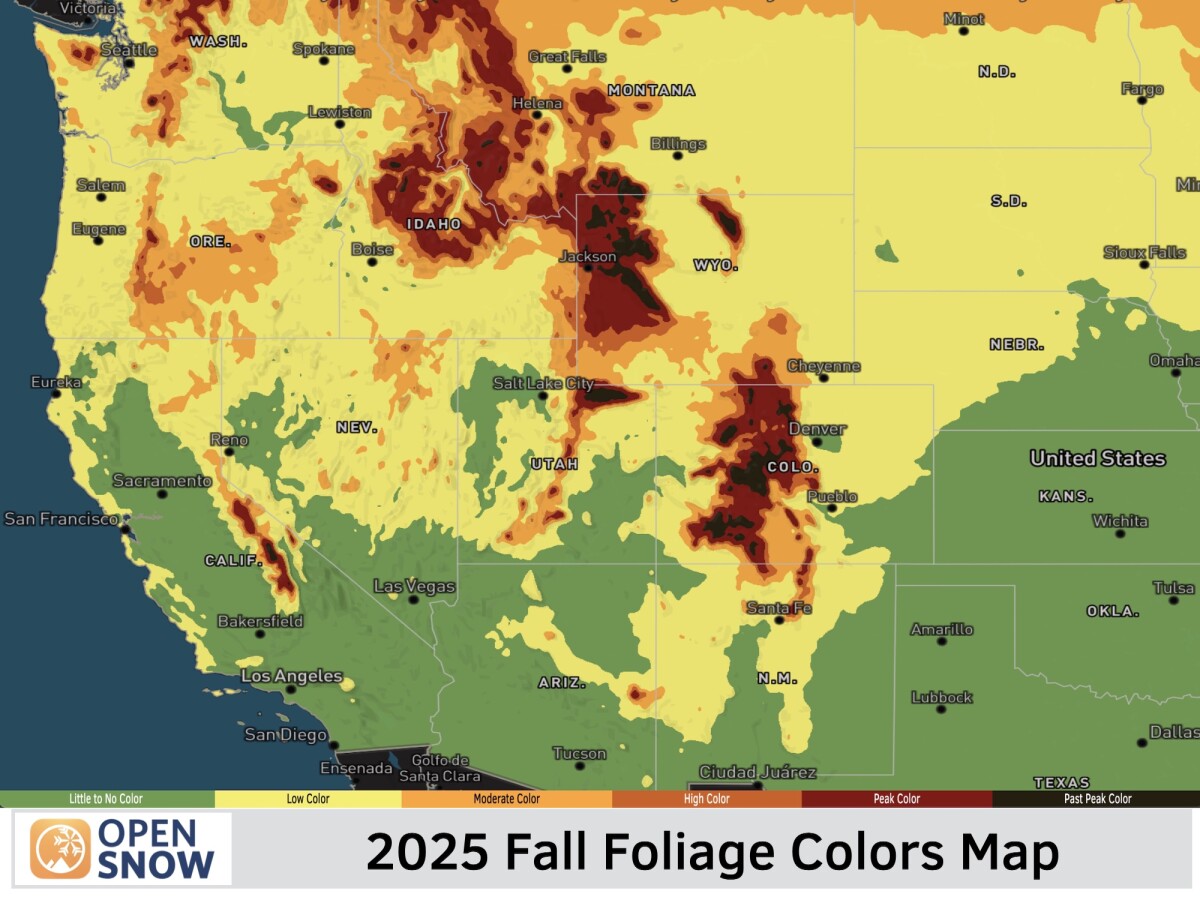News

By Zach Butler, Meteorologist Posted 1 year ago January 12, 2024
Wind Chill, Explained
The wind chill is the feels-like temperature due to the combination of cold temperatures and wind. The wind chill temperature decreases with stronger winds and with colder temperatures.
Knowing the wind chill has important implications for layering up and staying safe on the mountain. Let's take a look at how the wind chill is calculated, how we forecast it, and what this means for skiing.
What is the Wind Chill and How is it Calculated?
The wind chill is the feels-like temperature. It is what the air temperature feels like on the human skin due to cold temperatures and wind. A higher wind speed will mean a colder wind chill. That means if it is the same temperature with a wind speed of 10 mph vs 20 mph, the air temperature will feel colder at 20 mph.
- The wind chill is similar to the heat index, where both are different measures of the feels-like temperature.
- The wind chill can also be called the "apparent temperature".
Below is the "Wind Chill Chart" from the National Weather Service (NWS) which shows how the combination of wind and temperature causes different feels-like temperatures. The colors in the chart represent a frostbite indicator, showing the points where temperature, wind speed, and exposure (uncovered skin) will produce frostbite on humans.

The NWS has a wind chill calculator here.
The mathematical equation at the bottom of the chart describes how each number in the table is calculated. This equation was developed by Paul A. Siple and Charles F. Passel working in the Antarctic in the 1940s. They experimented with measuring the time it took to freeze 250 grams of water in different air temperatures and wind conditions. They developed an empirical formula relating that data to the rate of heat loss from exposed human skin.
The formula has been altered since this first experiment due to more precise meteorological observations and physics. The NWS has been using the adjusted formula since 1973 with minor corrections finalized in 2001 (Chart date above).
The NWS will issue a Wind Chill Advisory and a Wind Chill Warning if the forecast is particularly dangerous to be outside with the combination of strong winds and cold temperatures. Below is a look at the NWS warnings and advisories map on Sunday, January 14th, 2024 showing the dangerous wind chills expected across the US.

How the Wind Chill is Forecasted
The wind chill is forecasted by numerical models using the above equation. Numerical models forecast the air temperature and wind speed, thereby also forecasting the wind chill. While wind chills are not reported on OpenSnow forecast points, OpenSnow forecasters communicate when hazardous wind chills are in the forecast.
Below is a look at the wind chill forecast from the Euro model on Saturday, January 13th, 2024. OpenSnow forecasters use different models and tools like this to keep an eye on the wind chill.

What the Wind Chill Means for Skiing and Riding
It is all about the layers! Wind chill is the measure of the air temperature based on the contact with human skin. The wind chill chart highlights how lower wind chills can cause frostbite on exposed skin.
Adding extra layers and wind-resistant outer shells can seal in warmth to the human body and will help with fighting the wind chill. The biggest factor is covering all exposed skin, especially on the face when there is a low and dangerous wind chill.
Frostbite is the greatest hazard from wind chill and can only occur if the temperature is below freezing. Hypothermia is another hazard but can occur with or without the wind chill. The wind chill can increase the risk of hypothermia and the temperature can be above or below freezing.
- Hypothermia occurs when your core body temperature, normally around 98.6°F (37°C) falls below 95°F (35°C)
- Frostbite occurs when your body tissue freezes; the most susceptible parts of the body are the fingers, toes, ears, and the tip of the nose.
Wind Chill Facts
- The coldest wind chill ever recorded in the US was on Mt. Washington, NH at -108°F on February 3rd, 2023. The air temperature was -47°F with a wind speed of 100 mph.
- Windward-facing slopes will feel colder because they experience stronger wind speeds.
- The wind chill is not used for official climatological records.
Thanks for reading!
Zach Butler
About The Author




